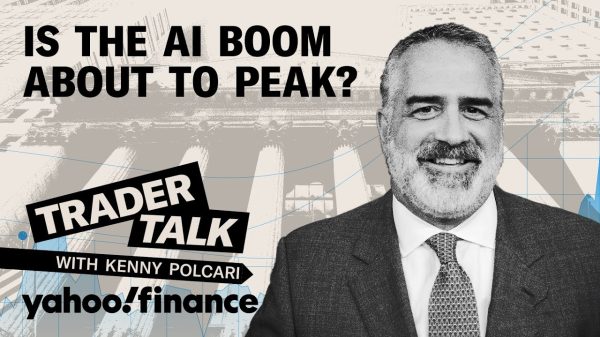OBSERVATIONS FROM THE FINTECH SNARK TANK
Intuit announced that it is “reimagining Mint as part of Intuit Credit Karma,” explaining that the company will “ensure a smooth transition for Minters who decide to onboard to Credit Karma.”
The company’s press release—titled ”Intuit Credit Karma welcomes all Minters!” went on to say that, in 2022, “the Intuit Mint team joined Intuit Credit Karma” and that the announcement “marks the next evolution of Credit Karma.”
If the terminology regarding Intuit, Credit Karma, and Intuit Credit Karma, is confusing to you, join the club.
Most Minters—or what the rest of the world would call “Mint users”—probably don’t know or care about the organizational differences (or connections) between Intuit and Credit Karma.
How Many Minters Are There?
The recent announcement made me wonder: How many “Minters” are there?
My initial estimate was 7 trillion. I arrived at that number by making a straight line projection, taking Mint’s reported growth between 2006 and 2008, and forecasting forward 15 years.
It was almost a joke back in 2006. Mint would announce some number of users, then two weeks later update that figure by some huge—and seemingly implausible— number. The reported growth was never corroborated by my own consumer research which found far fewer users than what Mint claimed.
Whatever the actual number was—or is—it’s on the decline.
In April 2016, Mint claimed to have more than 20 million users. Five years later that number had dropped to 3.6 million, an 80+% loss in users (depending, of course, on how you define “users”).
What Happened to Mint?
While the drop in Mint’s user base is precipitous, Intuit should be congratulated for maintaining any level of user engagement.
That’s because many providers of PFM tools have disappeared (e.g., Wesabe) or pivoted to other strategies (MX, Geezeo).
The problem was two-fold:
1) Historically (i.e., from 2001 to about 2015), PFM tools were predominantly budgeting and expense categorization tools. As much as financial experts tell us we need to budget and categorize our expenses, many (if not most) of us don’t do it.
2) Consumers didn’t—and still don’t—want to pay for budgeting and expense categorization. Consumers already spend a lot of money to manage their financial lives. Spending even more for budgeting and expense categorization isn’t…well…in the budget.
In effect, between 2006 and 2020 is the personal financial management space—where PFM=budgeting and expense categorization—died.
The Emergence of a New Space
There are some fintech entrepreneurs who—if they haven’t left this web page yet—can’t wait to tell me how wrong I am about the death of PFM.
Please keep reading and let me explain.
What’s emerged since 2015 are a number of thriving fintechs who say they’re in the personal financial management space.
But they don’t do budgeting and expense categorization. And—for better or worse—this is how many in the banking and financial services industry define PFM.
What these thriving fintechs do is financial performance management (I harbor no delusions that the acronym FPM will gain any currency).
These fintechs are doing things like: 1) canceling unwanted/unused subscriptions; 2) finding opportunities to reduce monthly bills; 3) automating how much consumers save on a regular basis. And many other things (beyond budgeting and expense tracking).
Mint, however, does none of these things. The PFM market morphed and passed Mint by—as have millions of former users.
The Lessons Banks Should Learn
A recent Yahoo! Finance article claims that “Mint’s shutdown is an opportunity for banks.”
It’s not an “opportunity”—it’s a lesson and a threat. In fact, there are a couple of lessons banks—and Credit Karma, for that matter—should take away from the demise of Mint and PFM:
1) Impact trumps insight. Budgeting and expense categorization provide insights into how much and where someone spends money, but having bottom line impact on consumers’ financial lives is what consumers really want—and are willing to pay for.
2) Performance trumps health and wellness. In these tough economic times, many financial institutions and fintechs are focused on helping consumers improve their financial health and wellness. But that’s not what consumers want—or are willing to pay for.
The Financial Performance Imperative
Performance versus health? This is just mincing words, no? No. There’s a difference between high performance and financial health when it comes to:
- Saving. You’re financially healthy if you save a certain percentage of your income. You’re achieving high performance if you optimize the return on your savings and investments.
- Spending. You’re financially healthy if you spend less than a certain percentage of your income. You’re achieving high performance if you maximize the discounts and deals you get on what you’re buying.
- Paying bills. You’re financially healthy if you pay your bills in full and on time. You’re achieving high performance if you reduce your bills and cancel subscriptions.
- Protection. You’re financially healthy if you have adequate insurance on your physical assets. You’re achieving high performance if you reduce you protect your data and identity assets.
Consumers’ use of—and spending on—fintech tools and services that deliver financial performance (versus financial health) is putting banks and credit unions at a disadvantage from both an engagement and revenue perspective.
If Credit Karma can successfully “adopt” Mint and integrate the tool into its offerings, it may prove to be yet another threat to banks’ efforts to offer personal financial “management”—and performance—tools to consumers.
Read the full article here









